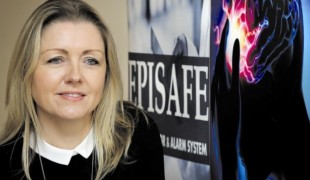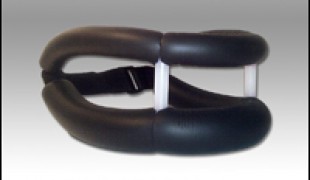- 9222
- 546
- 12
- 10
- 0
- Help Ukraine
About the solution
Kavita is not able to move out of her wheelchair due to her condition. Because she believes disabled people should be able to try to be more independent, she already came up with several assistive robotic devices that can help people with disabilities to have greater physical independence.
“It’s about increasing independence for people with severe physical disabilities. I have a number of prototypes for assistive robotics that can increase physical independence - such as repositioning limbs, transferring, personal care and mobility. The most significant aspect of my thesis is that even though the technology and hardware needed exist, sometimes having accessibility to control them is very difficult. For someone with a severe disability like myself, there are special keyboards to use the computer, and that helps. However, there is very limited research in the areas of robotics and accessibility”, the inventor explained.
One of Kavita’s prototype consists of a robotic mattress, which was the core of her PhD dissertation defence. This innovation is a small-scale prototype of a robotic air mattress that features a number of air chambers that can be inflated or deflated using a web interface. This means the user can alternate pressure settings. This can help patients who are not able to move but need frequent repositioning so that they can have pressure relief and better rest.
The inventor doesn’t want to stop and will keep working on using technology to help herself and others in need. “I’m excited about more physical independence through telepresence. I want to travel to more places, interact with more people, and see more assistive robotics that can increase mobility for people with disabilities. To improve the quality of life, people should be as independent as possible and new technology can help accomplish that. One of the prototypes I’m working on is a device that can move human arms and legs so that if I need assistance, I can use an Internet accessible telepresence interface to move myself safely. I know that will be achieved in the next five years”, Kavita observed.
More info: https://www.csee.umbc.edu/~kavi1/
Adapted from: https://bit.ly/2FRX30K
https://bit.ly/2HUV2Dc
https://bit.ly/2FIUQDw
https://bit.ly/2OEWj1K
https://youtu.be/nEi1zbIDHNI
这些解决方案不应包括使用药物,化学品或生物制品(包括食品);创伤性设备;冒犯性的,商业或内在危险的内容。该解决方案未经医学验证。请谨慎进行!如果您有任何疑问,请咨询健康专家。
DISCLAIMER: This story was written by someone who is not the author of the solution, therefore please be advised that, although it was written with the utmost respect for the innovation and the innovator, there can be some incorrect statements. If you find any errors please contact the patient Innovation team via info@patient-innovation.com
-
-
719
-
0
-
12523

Device to monitor Epilepsy seizures
CAREGIVING
Epilepsy
Assistive Daily Life Device (to help ADL)
Seizures
Enhancing health literacy
Promoting self-management
Managing Neurological Disorders
To implement a diagnostic tool
To improve Treatment/Therapy
Raise awareness
Caregiving Support
General and Family Medicine
Internal Medicine
Neurology
Pediatrics
United Kingdom
-
-
-
278
-
0
-
3693

shanesneckbrace
VENTILATION
WALKING: Walking
BODY BALANCE: Maintaining body balance
STANDING UP: Standing up from a seated position
SLEEP FUNCTION: Resting
CAREGIVING
Spinal Cord and Nerve Root Disorders
Treatment/Surgical device
Gait abnormalities (e.g., walking difficulties, unsteady gait)
Tremors
Muscle cramps or spasms
Stiffness or rigidity (difficulty moving)
Paralysis of the legs and lower body
Muscle weakness
Loss of balance
Numbness or tingling in the extremities
Fatigue
Managing pain
Promoting self-management
Preserving Organ Function
Managing Neurological Disorders
Recovering from Traumatic Injuries
Restoring Blood Circulation
To improve Treatment/Therapy
Preventing (Vaccination, Protection, Falls, Research/Mapping)
Neurology
Neurosurgery
Orthopedics
Physical Medicine and Rehabilitation
Rheumatology
Sports Medicine
United States
-
-
-
351
-
0
-
4295

Collaborator Pierluigi Mantovani creates Evolution Devices - solutions that aim to transform Multiple Sclerosis Management
CAREGIVING
BODY BALANCE: Maintaining body balance
STANDING UP: Standing up from a seated position
WALKING: Walking
Multiple Sclerosis
Assistive Daily Life Device (to help ADL)
Walking Aid (wheelchair/walker/crutches)
App (Including when connected with wearable)
AI algorithm
Body-Worn solutions (Clothing, accessories, shoes, sensors...)
Restoring mobility
Regaining sensory function
Managing pain
Promoting self-management
Preserving Organ Function
Managing Neurological Disorders
Maintaining Balance and Mobility
To improve Treatment/Therapy
Preventing (Vaccination, Protection, Falls, Research/Mapping)
Raise awareness
Caregiving Support
General and Family Medicine
Internal Medicine
Medical Genetics
Neurology
Physical Medicine and Rehabilitation
United States
-
 zh
zh